Albert Oehlen's art, a fascinating and daring enigma
Albert Oehlen, born in 1954 in Krefeld, Germany, has been a key figure in contemporary art since the 1980s. His art brings together abstract, figurative works, collage and computer-generated elements, and he continues to explore an inventive diversity of artistic approaches ranging from expressionist brushstrokes to surrealist gestures with almost extreme audacity.
It was during the 1980s, a period during which Oehlen studied at the Hochschule für bildende Künste in Hamburg, that artists sought to create works that defied categorization and contradicted the existing artistic status quo. Oehlen began to make a name for himself as, like many artists active in Germany, Switzerland and Austria, he approached the Neue Wil de or Junge Wilde art group and began to make abstract and figurative styles coexist within his creations. Oehlen’s attitude then shifted over time from the crude figurative approach of his early days to a combination of flexibility toward convention and abstractionism.
Along the way, he worked within self-imposed, often absurd parameters: he used only gray tones for his “gray” paintings and limited himself to red, yellow and blue for another series of what he calls “bad” paintings that included his infamous 1986 portrait of Adolf Hitler. He has made finger paintings, created collages using images taken from supermarket advertisements and, in the mid-1990s, embraced digital manipulation in works he wryly calls “computerized” paintings.
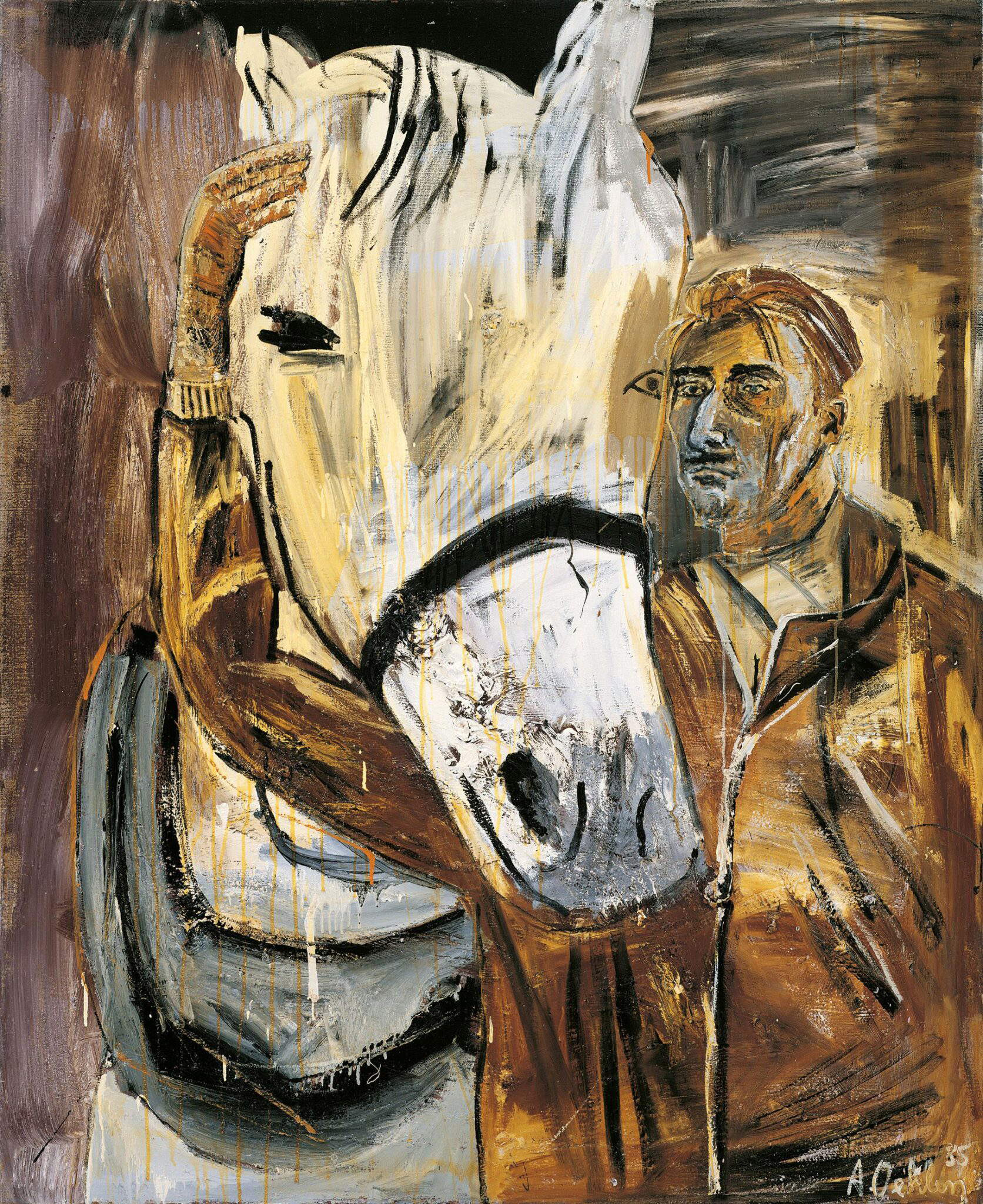

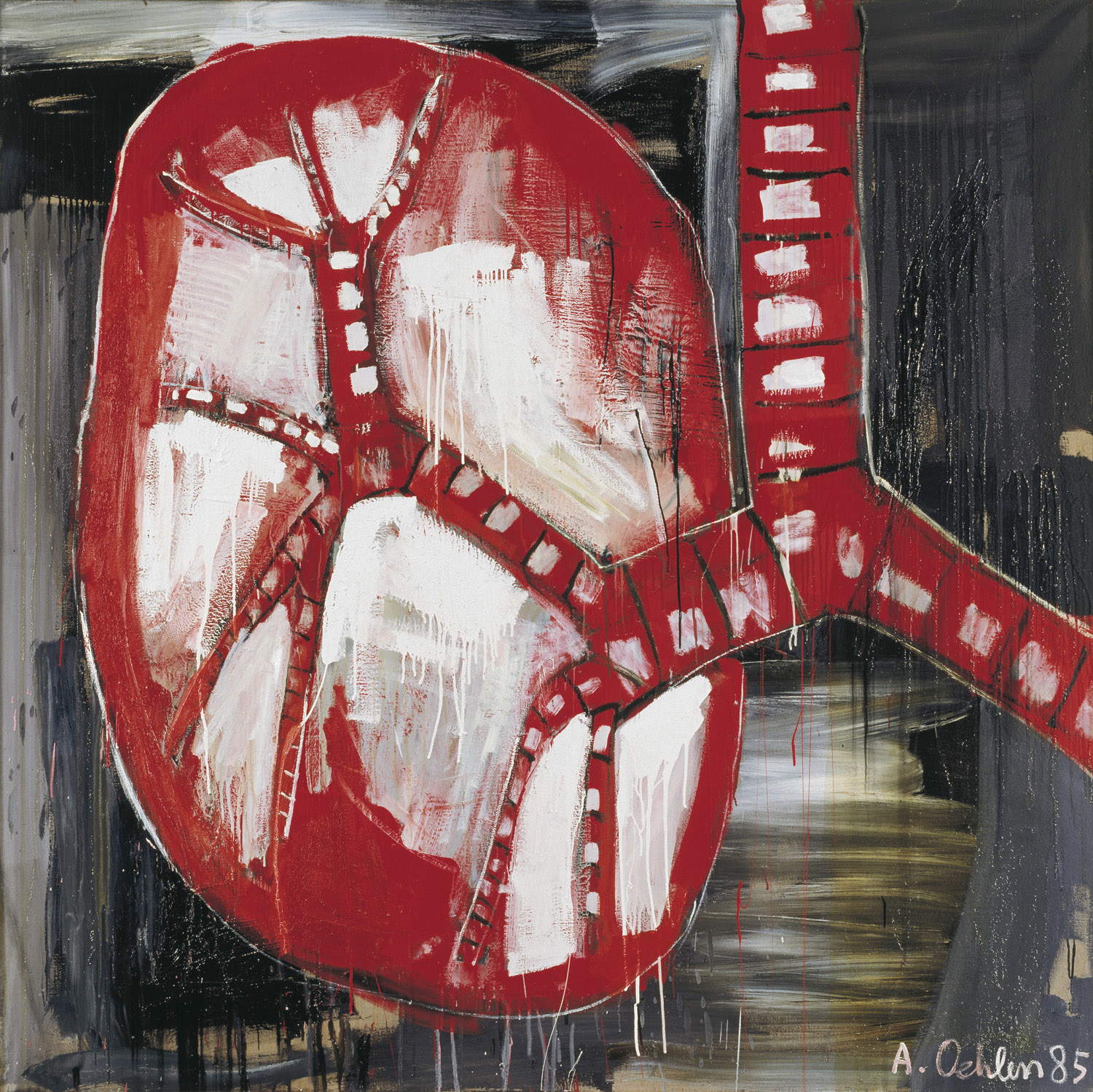
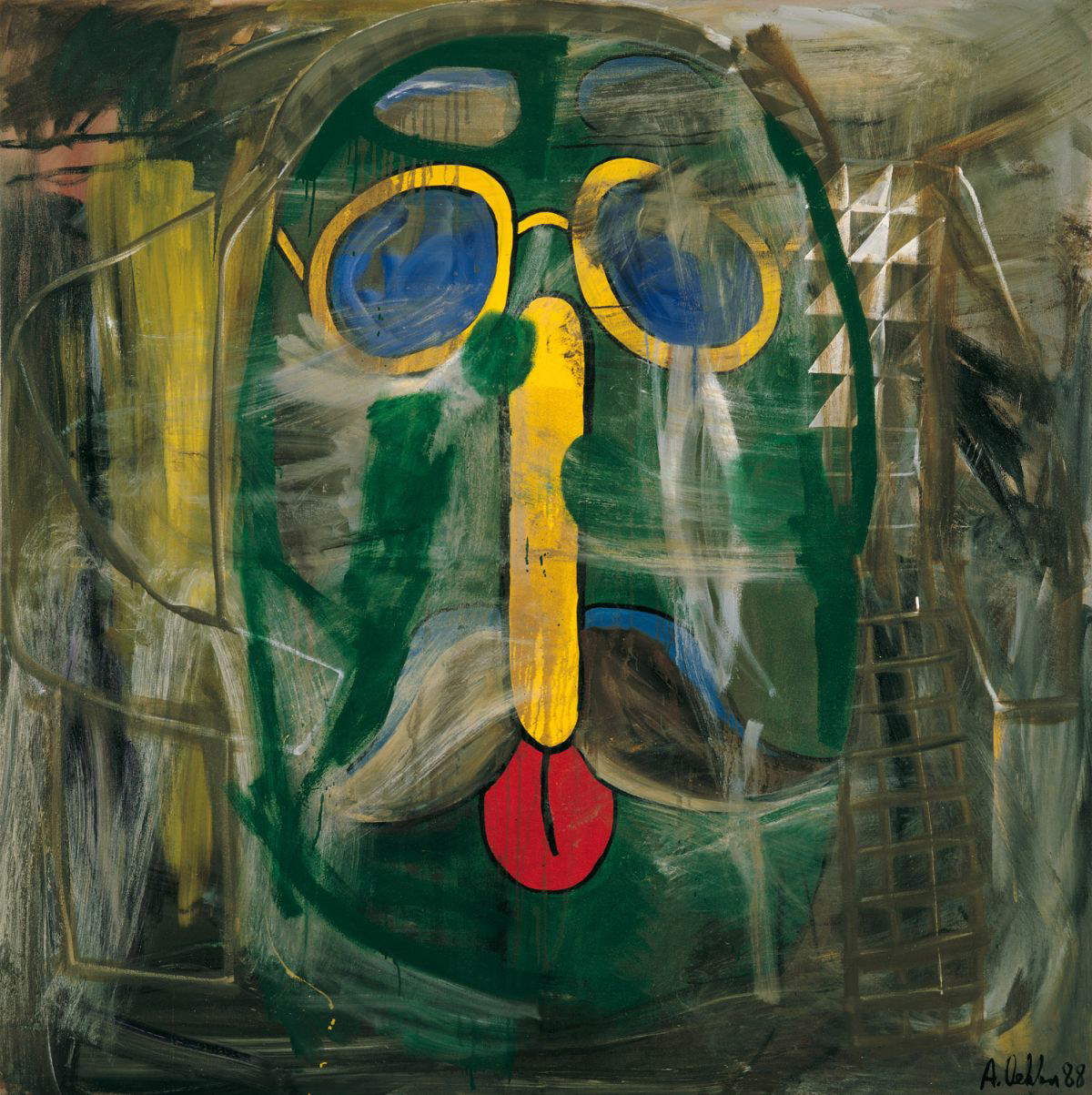

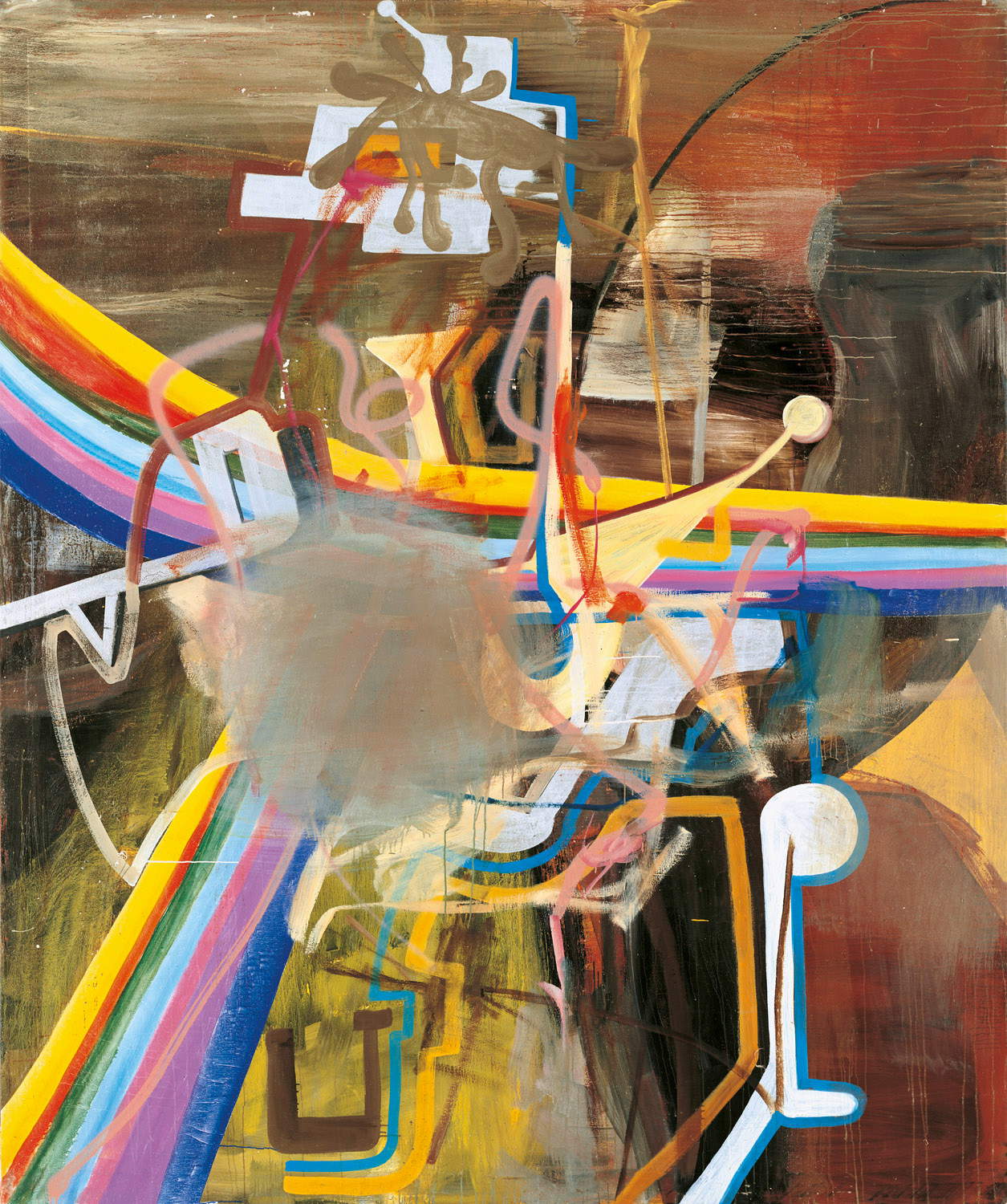

All of this may seem like an ill-fitting jumble of styles and experimentation, almost as if the compositional elements of the works were clashing. What, then, does his painting want to reveal? All the works take on the burden of trying to free themselves from the stories that are instinctively, and culturally, connected to a motif, a color, a technique, a touch of hand or a brushstroke.
As Oehlen himself states, “[The painting is] a kind of vehicle for me. It is like a motif construction kit. It is actually a single motif, but with various elements of a different nature. It goes from the graphic to the picturesque. That means there are parts that push you to paint more, to become more plastic. Then there are others with a large letter and smaller text and a wooden bar. There is a head with a pilot’s hat and goggles. But there could also be a third eye, rays and lines that go deep, as in [Salvador] Dalí, or the wooden boards we find in Jörg Immendorff’s paintings.”
If Oehlen possesses a method, it is to move away, brushstroke by brushstroke, from conventional elegance to wink at 1950s American action painting and the art of de Kooning. Albert Oehlen’s art comes across as an ode to the inherent freedom of the creative act, and with an expressionist stroke and surrealist methodology, his work stands in dialogue with the history of abstract painting, pushing the boundaries of abstraction into uncharted territory.
Oehlen is difficult to decipher, an enigma wrapped in an artistic mystery, and this is what makes him so fascinating. His practice can be interpreted as a continuous experiment and an endless search for new forms of expression. However, behind this apparent experimentation is a well-defined intent: the desire to escape any form of creative confinement.
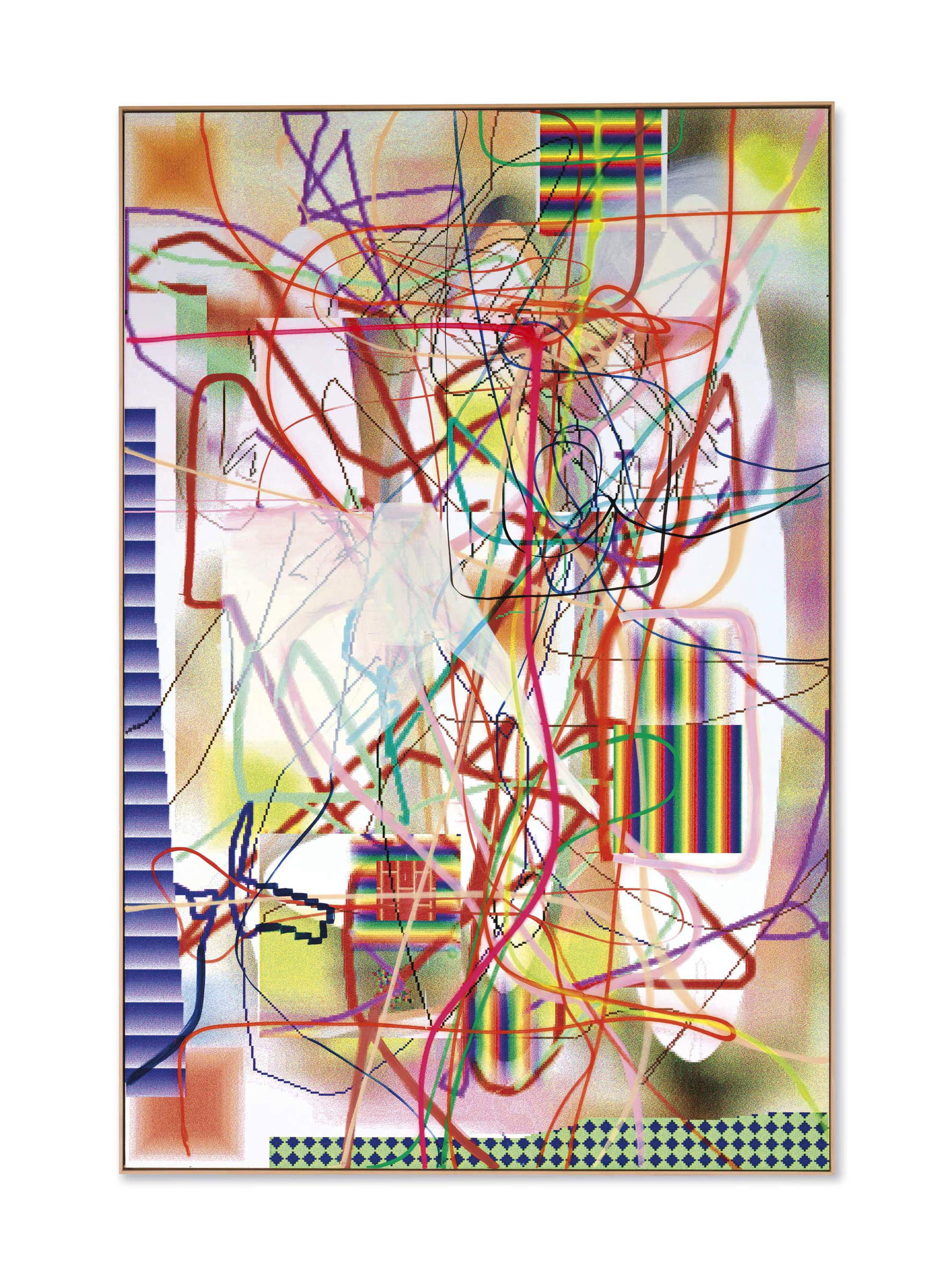
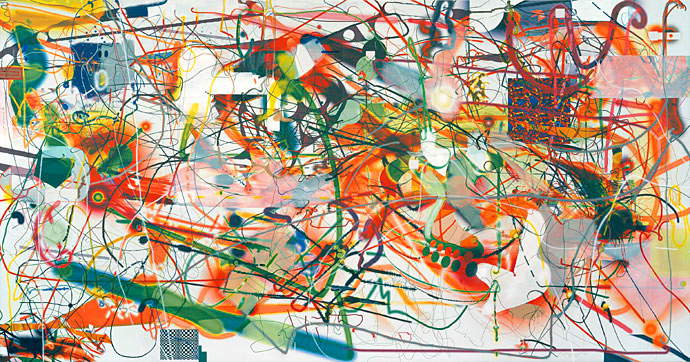
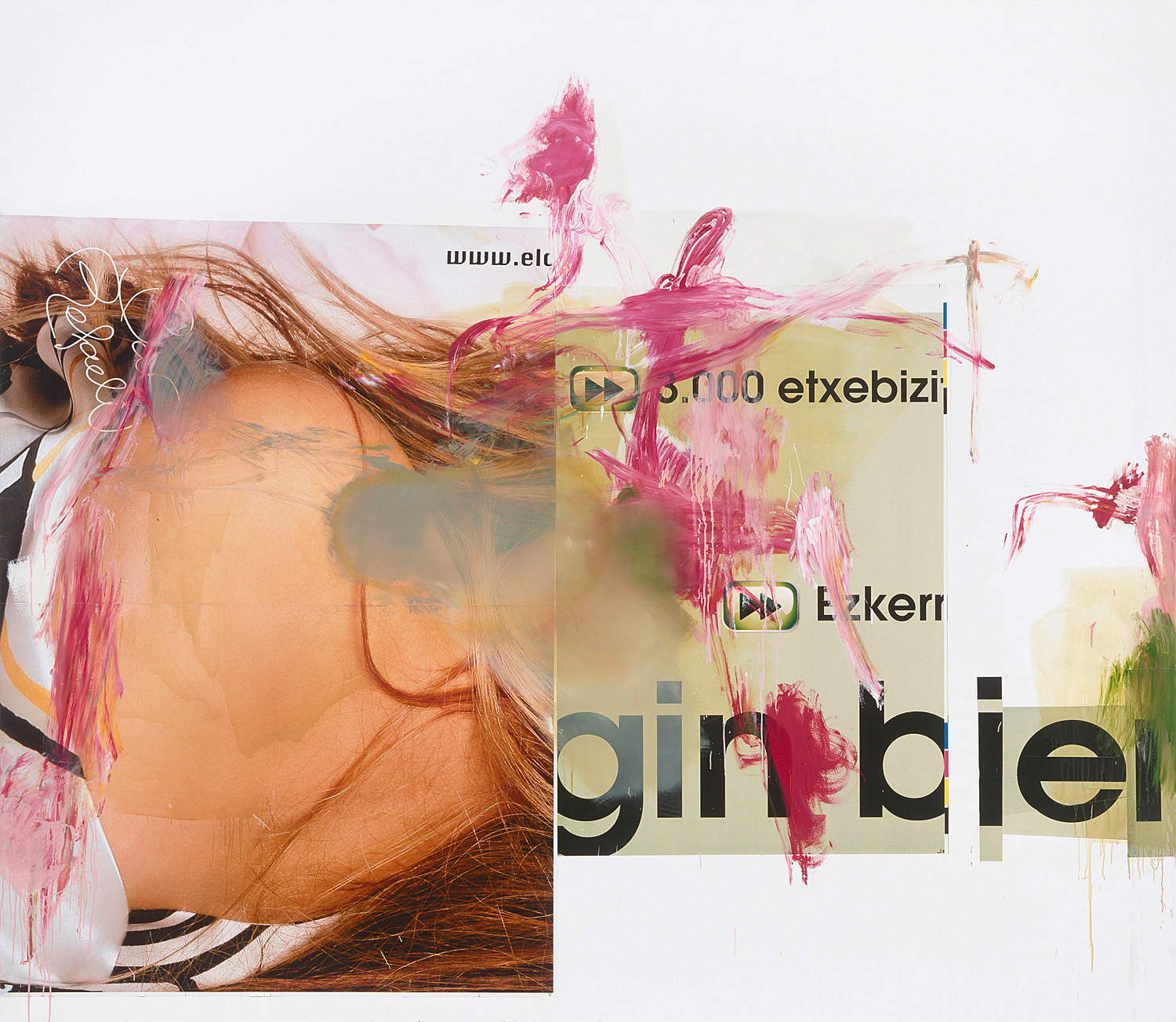
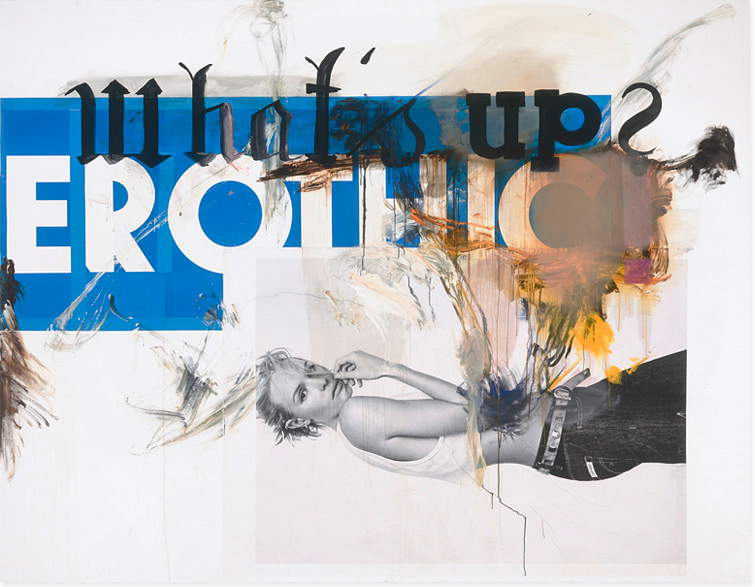
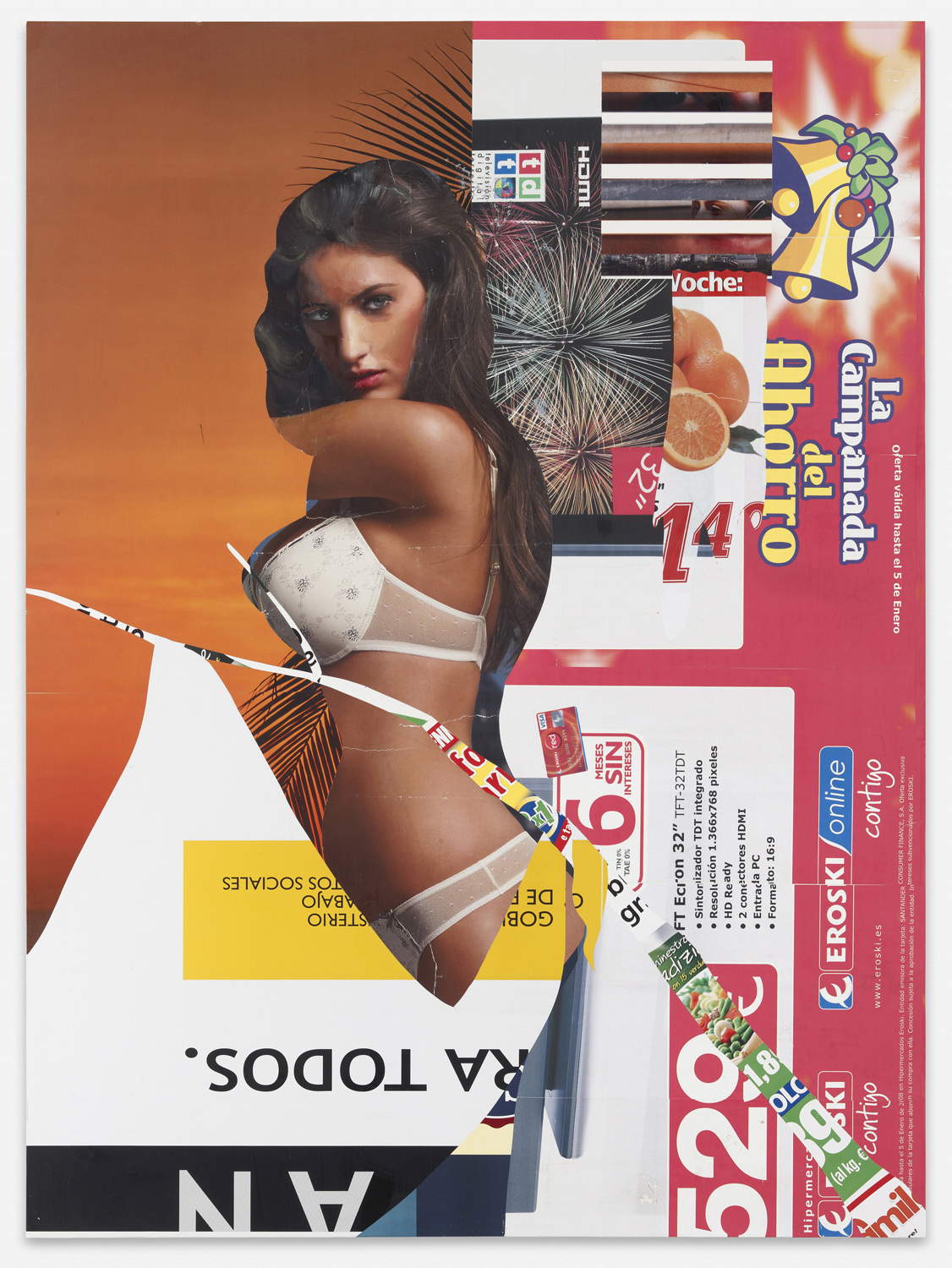

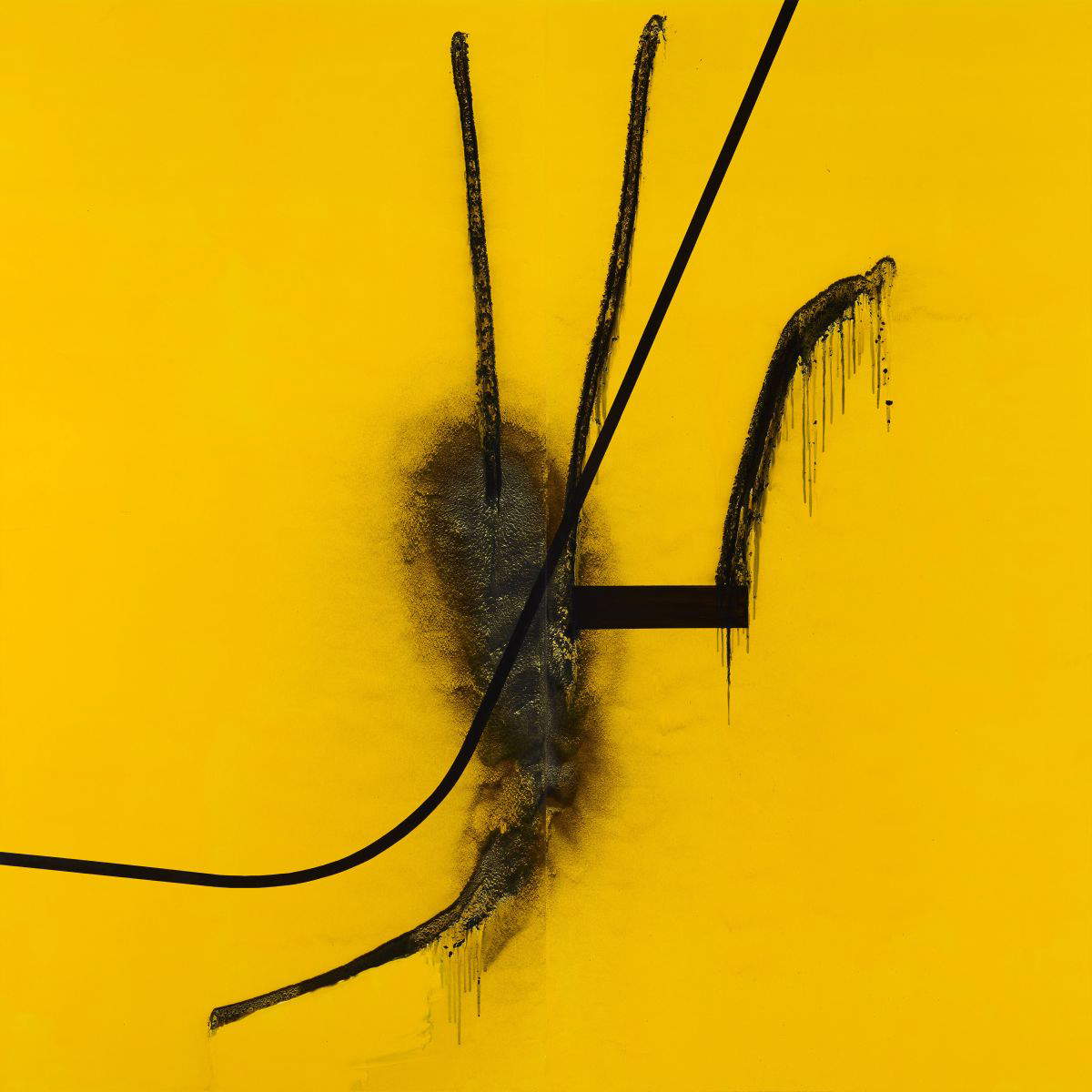
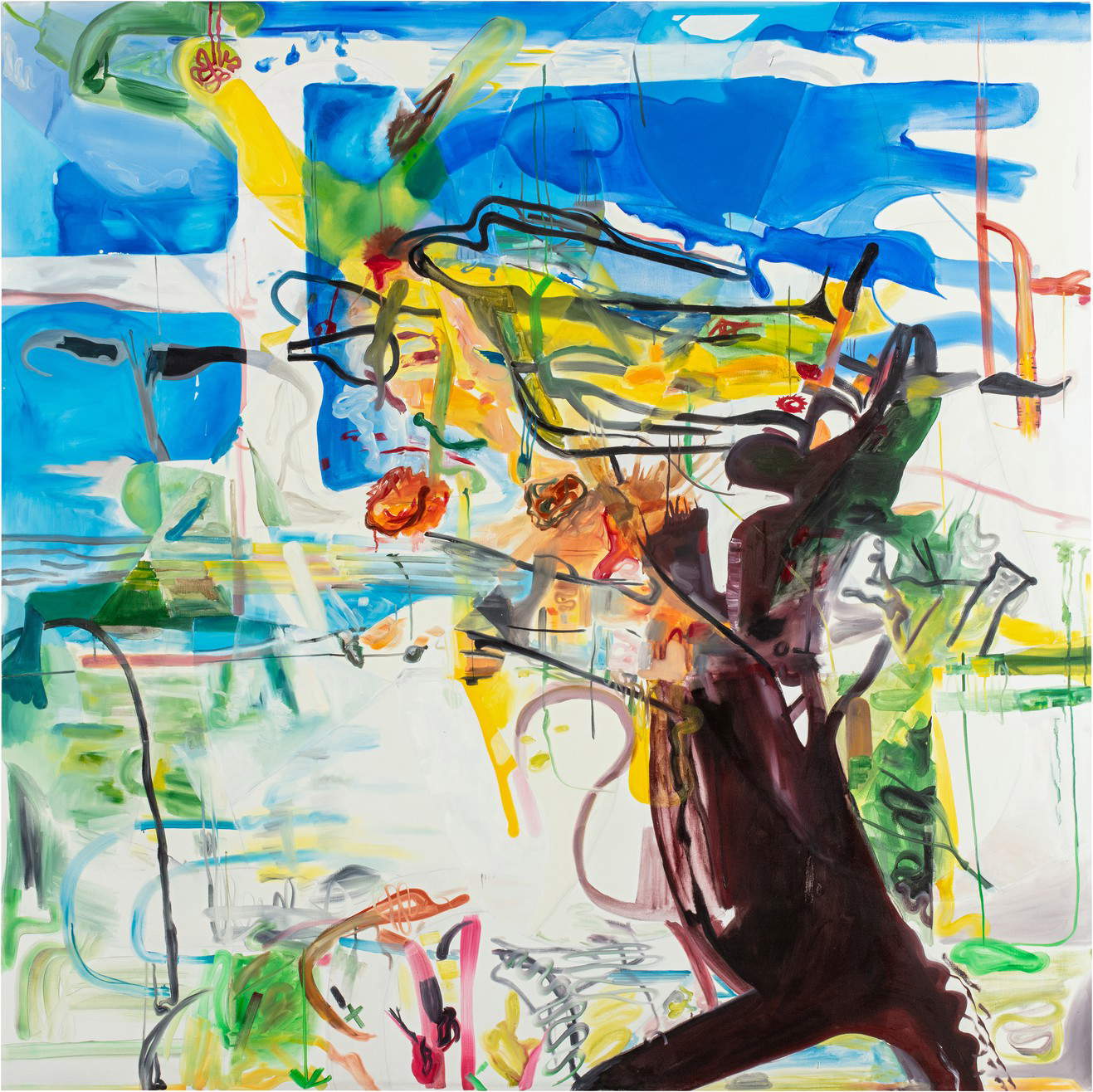

In the often serious and rigid world of contemporary art, Oehlen stands out for his light-hearted and playful approach, a kind of ironic detachment, a rejection of the rigidities and formalities that can sometimes pervade the contemporary art world. In this sense, his art becomes an authentic and unpretentious form of expression that reflects his personality and free spirit.
The artist himself said, “I always used color, but not with my heart, eye or aesthetic judgment. I didn’t care about color and was happy not to think about it. For about 20 years I simply put colors on the palette and worked with what was there. Then there came a time when I thought, ’What would happen if I cared about color?’ That particular paradigm shift led to a way of working that produced ’about two years of paintings.’” Although, he adds with a laugh, “it’s possible that many people didn’t notice the difference.”
Oehlen moves away from the conventional conception of painting as individual expression: he allows himself to be carried away by the use of color, form and spatiality, aiming to probe the functionality of the medium rather than its ability to communicate meaning and evoke emotion. Through his work, Oehlen advocates a vigorous and contesting response to the shortcomings of visual representation, tirelessly pursuing the reinvention and reformulation of pictorial methods in opposition to traditional hierarchies. His paintings offer a relentless energy, and wherever the eye goes, it finds things that engage it but do not add up.
Warning: the translation into English of the original Italian article was created using automatic tools. We undertake to review all articles, but we do not guarantee the total absence of inaccuracies in the translation due to the program. You can find the original by clicking on the ITA button. If you find any mistake,please contact us.




























